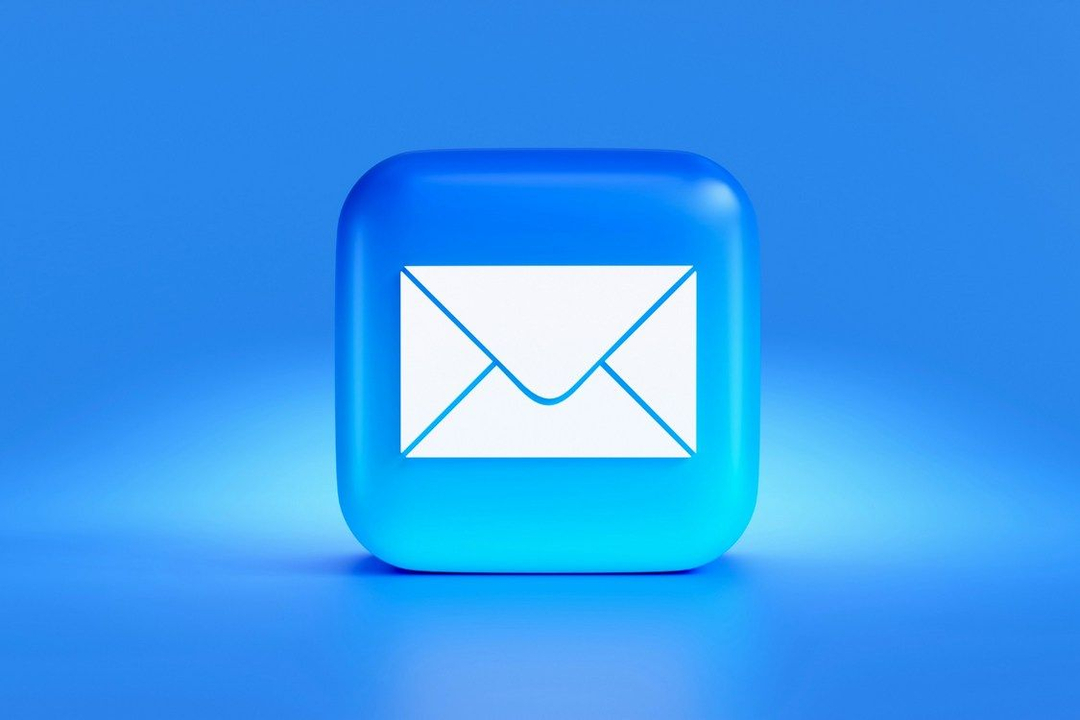Cold Email Subject Lines That Get Opened and Drive Replies
by Maildoso's team
05/21/2025
difficulty level ⭐
Cold outreach only works if your email gets read - and that starts with the subject line. Whether you’re reaching out to a lead for the first time or following up after a quiet reply, your subject line determines if the message is even seen. It’s more than just a line of text - it’s your first impression, your hook, and often your only chance to stand out in a crowded inbox.
In this article, we break down proven cold email subject lines that actually get clicks, with detailed explanations of why they work. You’ll also find practical tips on writing subject lines that avoid spam filters, improve response rates, and stay relevant to your audience. From freelancer outreach to B2B follow-ups - and the infrastructure that supports it all - this is a comprehensive guide to smarter, better cold emailing.
Contents
- Maildoso Cold Email Platform for High Volume Outreach
- Tips for Writing Cold Email Subject Lines That Actually Work
- Best Cold Email Subject Lines
Maildoso Cold Email Platform for High Volume Outreach
Cold email campaigns often fail before they start if messages don’t reach the inbox. That’s the issue we built Maildoso to address - a system designed for outbound teams managing high-volume cold outreach. Instead of setting up each domain and mailbox manually, we provide a pre-configured environment that takes care of inbox provisioning, domain setup, and technical configuration automatically. You can find a full walkthrough of this setup on our website.
Deliverability is handled by simulating real inbox activity through browser-based agents - sending, receiving, opening, and replying. This reduces reliance on traditional warm-up tools and helps maintain a consistent sender reputation. Features like IP rotation and tracking domain configuration are included by default, so teams don’t need to adjust these settings manually.
If you’re managing outreach across dozens or hundreds of mailboxes, everything is centralized. All replies go into one interface - no switching accounts to track conversations. We at Maildoso also provide real-time visibility into domain status, inbox performance, and campaign health through a single dashboard.
Beyond the infrastructure, we help improve what teams actually send. This includes content structure feedback, deliverability audits, and basic pre-send reviews to catch formatting or compliance issues. These checks help reduce avoidable mistakes that can impact open or reply rates.
If you're reviewing operational cost or evaluating tools for scale, full pricing details are available on our Pricing page. For updates, product releases, and shared user feedback, visit our LinkedIn page - it's also where we connect with teams running similar campaigns.
Maildoso is built to reduce the technical friction of cold outreach and help teams manage deliverability as they scale.
Tips for Writing Cold Email Subject Lines That Actually Work
Even the best cold email won’t matter if it’s never opened. And that decision often comes down to just a few words: your subject line. It’s the first impression, the deciding factor, and sometimes your only chance to earn attention. Writing a subject line that gets clicked requires more than creativity - it takes precision, clarity, and a deep understanding of what your recipient actually cares about.
Below are practical and tested tips for crafting cold email subject lines that lead to real opens and better response rates.
Keep your subject line short enough to be seen
Most inboxes cut off subject lines after 40 to 60 characters, depending on the device. Mobile users - now the majority - often see even less. Aim for seven words or fewer to stay visible in all views. But being brief isn’t enough - each word must add value. Avoid filler, and make every word speak directly to your recipient’s priorities. Think about what would make them stop scrolling: something tied to their goals, responsibilities, or challenges.
Personalize beyond the name
Yes, adding someone’s first name helps. But personalization isn’t just about inserting a token field. Use what you know - their company, role, or industry challenge - to make the subject line feel written specifically for them. A generic line like “Let’s talk” won’t compete with one like “Quick question on your Q3 churn metrics.” A well-researched subject line increases open rates and signals that your message isn’t just another blast.
Be interesting - not clever
Your subject line doesn’t need to be witty. It needs to be relevant. Use something timely, topical, or relatable. Refer to recent trends, shifts in the recipient’s industry, or a common challenge they’re likely dealing with. If you reference something familiar - a market change, a product launch, or a new policy - you’re far more likely to trigger curiosity. Just remember: your subject line isn’t the place to pitch. Its only job is to get opened.
Highlight the value, not the feature
The most effective subject lines aren’t about what you do - they’re about what the recipient gets. Don’t say “CRM for scaling sales teams.” Say “Helping [Company Name] speed up close rates.” Frame your subject in terms of outcome, not offer. This approach follows the “WIIFM” principle - What’s In It For Me - and appeals to decision-makers who are scanning their inbox for relevance, not specs.
Create urgency, but only when it’s real
Time sensitivity works - if it’s credible. Phrases like “this week only” or “Q2 pricing ends Friday” can prompt faster action, but they lose all power if overused or misleading. Use urgency to reflect an actual deadline or event, not as a gimmick. Urgency can also be subtle: “Open slots this month” or “Only 2 onboarding calls left this week” feel real without sounding desperate.
Avoid subject lines that sound like spam
Anything that feels like a trick - exaggeration, all caps, misleading stats - damages trust and reduces response rates. Words like “free,” “guaranteed,” or “urgent” can trigger spam filters. Worse, they make you look like everyone else in the junk folder. Stay credible. If your subject line wouldn’t sound natural coming from a peer or advisor, revise it until it does.
Use keywords that matter to the recipient
Think like your prospect. What terms would they be scanning for? If you’re emailing someone in finance, terms like “reporting,” “revenue loss,” or “cash cycle” might catch their eye. Keywords are filters - use them to align your message with the reader’s mental priorities. Trends and industry terms can be especially powerful when used in subject lines targeted at professionals in specific fields.
Test and adapt - not every subject line works for every audience
No subject line performs well everywhere. What works for one audience may flop with another. Use A/B testing to compare versions. Test one variable at a time - tone, keyword, structure - and measure open rates over a meaningful sample. Let the data guide your iterations. Over time, this helps you fine-tune your subject lines to match the behavior of your actual prospects.
Best Cold Email Subject Lines
Cold emails often get ignored not because the message is bad, but because the subject line never earns a click. A strong subject line doesn’t oversell, doesn’t mislead, and doesn’t beg for attention. It simply creates a reason to open the message.
Here are proven cold email subject lines with detailed, rewritten explanations based on insights from sales pros, marketers, and real testing.
General Outreach Subject Lines
- “Quick idea to improve [goal]” This subject line is effective because it feels low-effort and hints at relevance. The word “quick” makes it feel easy to open. “Improve” signals value without promising a solution outright. You can adapt this to any business function: sales, hiring, marketing, operations, and more.
- “[First Name], a thought for [Company Name]” Adding the recipient’s name and company makes the message feel personal, not mass-sent. The word “thought” sounds non-invasive, giving space for a conversation rather than a sales pitch. Use this if you have a small insight or offer to share that aligns with their role.
- “Boosting output without more hires?” This one taps into a common operational challenge: scaling efficiently. It works well for consultants, SaaS tools, or freelancers offering a shortcut to performance without headcount. It raises a pain point and implies a solution is waiting inside.
- “Saw something in your process worth sharing” This subject line builds curiosity but stays respectful. It implies you’ve done your research and noticed something they might benefit from addressing. Avoid being critical - the goal is to open a door, not accuse them of doing something wrong.
- “[First Name], what would it take to fix this?” This question sparks intrigue while also hinting at problem-solving. It works best when you already know a potential weakness or opportunity. Inside the email, be ready to back it up with something useful, not just a vague offer.
Follow-Up Subject Lines
- “Just checking back - any updates?” A polite, low-pressure follow-up that doesn’t feel demanding. It gives the recipient a chance to respond without making them feel guilty or cornered. Ideal for the second or third follow-up after initial outreach.
- “Wanted to follow up on my last note” Simple and direct. It acknowledges that this isn’t your first email, and it allows you to reframe the original message or offer something new. Works well in busy inboxes where your email may have been lost.
- “Following up - still interested in solving [problem]?” This version introduces context, which helps your message stand out in threads. Mentioning the specific issue reinforces relevance and can prompt a reply from recipients who meant to respond but got distracted.
- “I had an idea after our last conversation” Best used after a brief call or prior exchange, this shows thoughtfulness and gives a reason for your follow-up beyond “just checking in.” You don’t need to pitch - offering insight or pointing to a useful resource is often enough.
- “Still on your radar?” This line is a good way to re-engage silent leads. It communicates awareness of the situation (you haven’t heard back) while giving the recipient space to respond or close the loop.
Freelance & Consultant Pitch Subject Lines
- “Freelancer available to support [Project] - open to chat?” This is honest and clear. It tells the recipient what you do, that you’re currently available, and that you're asking for a short conversation. Great for project-based roles or interim support offers.
- “Helping [Industry] teams get results without overhead” Framed around value and efficiency, this subject line works well if you're trying to pitch fractional support, external help, or anything that reduces internal load.
- “Can I contribute to your team’s next big push?” This subject line uses the language of collaboration. It doesn’t feel transactional, which can help you come across as a contributor instead of a vendor.
- “You might need help with [Task/Challenge] - I can assist” If your services solve specific, time-consuming problems (e.g., copywriting, audits, dev work), this line can resonate. Pair it with a brief, useful message inside.
- “Trusted freelancer available - short intro?” Use this when reaching out cold with no mutual connection. It communicates credibility without overselling, and “short intro” lowers the reader’s resistance to opening the email.
Referral-Based Subject Lines
- “[Referral Name] recommended I contact you” This is a strong opening if the recommendation is real. Name-dropping without permission will backfire. But if legit, it creates instant credibility and bypasses skepticism.
- “[Referral Name] thought we should talk” A casual version of the first one. This works well in industries where people know each other or when you're referred by a peer at a similar company.
- “You and I share a connection - quick note” This line builds curiosity while being honest. You don’t have to lead with the connection’s name but mention it early in the email body for context.
- “Saw your name through [Shared Group/Network]” This is great if you’re reaching out after seeing someone in an online community, Slack channel, or membership group. Feels relevant and warm.
- “Contacting you via [Referral] - hope that’s okay” A respectful and slightly more formal way to approach a senior-level prospect, especially if the referral is someone above or outside the recipient’s team.
Subject Lines to Book a Call
- “15 minutes this week?” Still one of the most effective subject lines. No fluff, no tricks. Everyone has 15 minutes. Use this when you're being straightforward about a meeting.
- “Quick call to explore fit?” This works well for early conversations. It signals a two-way evaluation, not a pitch, which can lower the recipient’s guard.
- “Open to connect Thursday afternoon?” A date-specific subject line makes it easier for people to check their calendar and reply. It also shows that you're serious about getting something on the books.
- “Let’s lock in time to align” Ideal when a conversation is already in progress. This phrase works well with leads who are already familiar with your offer or message.
- “Meeting invite: [You] + [Them] - short alignment?” Professional and clear. Use this when proposing calendar invites, especially for enterprise or mid-market clients.
Subject Lines That Break Patterns
- “Do not open this email” This is reverse psychology at its finest. It feels playful and odd enough to invite curiosity. Use cautiously - it won’t work for formal or conservative audiences.
- “Let’s cut to the chase” Great when you’re following up after a few ignored emails or want to stand out in a crowded inbox. Sets a bold tone, so make sure your email delivers.
- “I might be wrong about this, but...” Admitting potential error lowers resistance and invites engagement. This works well when you’re proposing an idea or identifying a business gap.
- “Your competitors are already trying this” Fear of missing out drives attention. Be ready to back up your claim — if overused or vague, this type of line can come off as manipulative.
- “Can I ask one honest question?” It signals a direct approach. People tend to open messages that feel like they’re about something real, not scripted.
Conclusion
Choosing the best cold email software depends on your specific outreach goals, team size, and technical needs. Whether you're looking for advanced deliverability tools, high-volume mailbox management, AI-powered follow-ups, or an all-in-one sales platform, the options listed above cover a wide range of features to support effective outbound communication. Each tool has its own strengths, from easy setup to deep personalization and performance tracking.
By selecting a solution that fits your workflow, you can save time, avoid common deliverability pitfalls, and connect with more prospects efficiently. As cold emailing continues to evolve, using the right software is key to staying ahead and getting real results from your campaigns.
FAQ
Double your outbound sales with Maildoso!
We provide the infrastructure for cold outreach with the highest possible deliverability. Forget about the spam folder—set up hundreds of mailboxes in just 10 minutes, starting at only $1.80/month!
You might also be interested
Best Cold Email Software for Smarter Outreach
Explore the best cold email software to send smarter campaigns, reach more prospects, and improve your outbound results without hitting spam.
difficulty level: ⭐⭐
How to Choose the Best Cold Email Platform for B2B Outreach
Explore the best cold email platform options for managing domains, mailboxes, and deliverability in B2B outreach.
difficulty level: ⭐⭐
Best Cold Email Outreach Software for B2B Campaigns
A practical guide to the best cold email outreach software for managing campaigns, improving deliverability, and scaling B2B outreach.
difficulty level: ⭐⭐
BacklinkSwappers, inc.
1390 Market Street Suite 200 San Francisco, CA 94102




